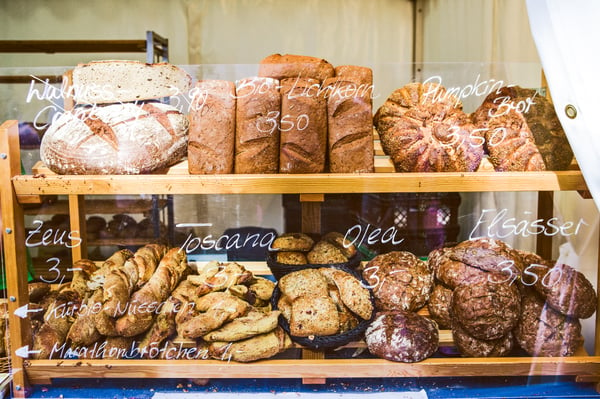Index Content
How to increase your company's profitability with psychological pricing
Surely more than once you have wondered why a product is worth €0.99 instead of €1. The key lies in psychological pricing, which affects our decisions as buyers without us realising it. The customer's goal is to make the perfect purchase, that is, to have chosen the best product at the best price. Here the emotions of the consumer interfere, who probably wants to take advantage of an offer or choose the cheaper brand between two options. Therefore, the psychology of prices not only adjusts the sales figure to make it more attractive, but also plays with discounts or the way of presenting them (such as reducing the size of the decimals).
This is all part of neuromarketing, i.e. the analysis of the environment and the most appropriate techniques to pave the customer's way towards the purchase of the product or service. Thus, between the decoration of the premises (with special attention to colours), ambient music or smells, we find psychological pricing as an essential means of attraction. In this way, as a seller you can increase your sales without changing the characteristics of the product: the key is to develop a timely pricing strategy that awakens a need to buy. But how is it done?
To begin with, not all consumers act in the same way when faced with these prices, so it is worth noting the differences between the two types of users that exist:
- Analytical consumers. When analysing a price, they look at each digit individually and give maximum importance to the number on the left. Therefore, the strategy of adding nines to the price is very useful with this type of buyer. They are linked to Western countries.
- Holistic consumers: In this case, they study the price as a whole, paying attention to all the digits that compose it. Here it is not enough to include nines, but it would be appropriate to implement other strategies (such as the ones we will discuss below) to convince them that they are making the best decision. They are linked to Eastern countries.
The 5 main strategies of psychological pricing
Depending on the nature of the product, the type of consumer you are targeting or the sales medium, you will need to implement the most appropriate strategy according to your objectives. To do so, let's look at the five most popular psychological pricing techniques:
- Round price
When a purchase has an impulsive and non-rational component, it is very useful to set round prices (such as 1€ or 30€) to generate a sense of perfection. We are talking about products that are not essential, but that arouse a positive emotion in the consumer, for example, unhealthy snacks (a bag of sweets) or gourmet products (such as a bottle of wine).
- Odd price
This is the most common strategy among psychological prices, as its effectiveness has been proven by studies and our own experience. In this way, using odd numbers makes the product appear to be cheaper or on sale. There are two options: set a round odd number (199€) or put decimals with the numbers 5 or 9: it is not the same to see 200€ as 199'99 or 199'95€. As we have already seen, this is the most convenient strategy for analytical consumers. In this case, it is very useful for products whose prices can influence the purchase to a greater extent, such as clothing or household appliances.
- Normal price
This consists of maintaining the same price permanently on a product to generate confidence, comfort and security in the buyer. This type is suitable for products that are very stable in the market and that buyers purchase on a recurring basis. For example, newspapers or magazines in paper format, subscriptions to a digital newspaper or basic foodstuffs such as bread. A sudden change in these products would generate rejection among customers.

- Relative price
This is where competitor analysis comes into play. You have to decide whether to under-price or over-price your competitors. Either way, the decision to buy will depend on which products or services can be compared to yours. If they are cheaper, you can stand out by giving an image of quality. If they are more expensive, it would be the cheapest option. Choose the price according to the strategy you consider most appropriate. An example is the hotel sector.
- Prestige pricing
In this strategy, your best ally is the motto "cheap is expensive". Higher prices convey a sense of quality. As we have just mentioned, if your product is more expensive than the competition's, you will attract customers who prefer to invest more money in exchange for a better experience. Here we can find both luxury products and supermarket food (private label vs. recognised brand).
8 other successful formulas
In addition to the most common strategies, there are many others that can be better suited to your product or strategy. Let's take a look at some of them:
- Joint price: This is based on grouping different products together in a pack for a cheaper price than if they were bought separately. It is usually found in e-commerce.
- Penetration pricing: When launching a new product, it is advisable to offer it at a lower price than the competition in order to generate an impact on the market and find customers.
- Freemium pricing: In digital programmes or subscriptions, it is very common to find a free offer to enjoy the service for a certain period of time. In this way, the user can try out new functions and decide whether or not to pay for them in the future.
- Dynamic pricing: Very common in the transport sector, where you set the price depending on the time of year. The higher the demand, the higher the price, the lower the price.
- Limited offers: If you offer temporary discounts, you will create a sense of urgency in the customer: if they do not buy it at that moment, they may lose the opportunity to buy it at the same price.
- Use discounts and percentages. One option would be to place the original price next to the reduced price so that the customer can compare them and quickly check the discount.
- Use the word "free" or "gift" to create a direct impact on the customer: it may be more attractive to say "buy one and we'll give you another for free" than to offer a 50% discount.
- Differentiate the price of shipping costs.
Now that you understand why a product can reap more sales if it is worth €0.99 than €1, it is time to apply what you have learned and look for originality in your strategy. Also, avoid establishing techniques that are too abusive and obvious to annoy customers. Remember that, as well as looking for profitability, the aim is to make consumers more satisfied with their purchase.





